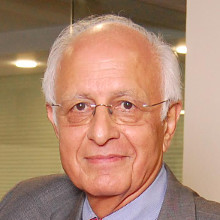[Photograph by Gerd Altmann under Creative Commons]
There is an old and wise saying, “If you do not know where you are going, you will end up somewhere else.” “Achhe Din” will come into the lives of Indians when they have dignified livelihoods with decent incomes. The number one priority of the Indian government must be much faster generation of more, and better jobs. The Indian economy’s growth, in terms of GDP, is the highest in the world at present. However, it is one of the slowest in the world in creating jobs. The employment elasticity of the Indian economy (the rate of jobs growth in relation to GDP growth) has been less than the global average from 2000 to 2010. The average employment elasticity of the global economy was 0.3 in this period, while India’s was only 0.2. Even more worrying is the declining trend of employment elasticity of India’s growth. It declined from 0.44 in the five years 1999-00 to 2004-05, to only 0.01 in 2004-05 to 2009-10—close to jobless growth. The government’s sights must be fixed on the generation of more jobs as the principal goal, rather than the growth of GDP. Otherwise the Indian economy will produce more GDP and not jobs.
While the Indian government is pressing on the accelerator to induce more job growth, with its Make in India, Skill India, and Start-Up India campaigns, technological advances may be throwing a spanner in the works. Rapid advances in digital technologies and automation are displacing people from work in all sectors of the economy—in manufacturing, in services, and even in knowledge industries. Studies in the USA and Australia estimate that by 2035, 35% of all work in their economies will be automated and this can impact over 50% of present employment. The International Labor Organization (ILO) says, in its Future of Work Report, “The unfurling technological revolution…is so far-reaching in its labor-replacing potential that it is inherently different from what has been experienced in the past.”
Jobless growth of the Indian economy is a ‘5C’ problem: a Complicated Condition Created by Combinations of Causes
Jobless growth of the Indian economy is a ‘5C’ problem: a Complicated Condition Created by Combinations of Causes. Automation is adding another complication to the problem. Silver bullet solutions cannot solve such systemic problems with multiple causes, nor can conventional management approaches. The conventional management approach for solving a complex problem is to break it down into its parts and then address each of them. A tough CEO may say, “Tell me the six things to fix; I will charge six teams with relevant experts in them to fix them; and I will make sure I chase the teams to get these things done.” Sounds like an effective way to solve a big problem, except that it often makes the problem much worse. Fixes often backfire because the interactions among causes are not understood. Therefore, a fix of one part of the problem makes another part worse, and the whole system’s performance declines.
Fixes often backfire because the interactions among causes are not understood.
A person with poor health often has a 5C problem—a complicated condition created by combinations of causes. Many symptoms of the poor health may appear in different parts of the body. Specialists are brought in to treat each of the problems: the weak heart, the poor digestion, the mental anxiety. Often, when a specialist relieves the mental anxiety with a strong medicine, its side effects can make the digestion worse. Then an intestinal specialist may prescribe the latest drug to treat that condition. Which may affect the heart. The sub-systems of the body are parts of an interconnected system. Increasingly, what is missing in modern medicine is a general physician (GP) who has the skill to comprehend the whole system.
Jobless growth can have multiple causes. Consider just five of these: unskilled people, insufficient investment, difficulty of doing business, rigidity in labour laws (difficulties in firing employees), and inadequate (or inappropriate) social security systems. Each of these requires a solution. Therefore, separate ministries are charged with the development of policies and their implementation to address these problems. Then, their progress is closely monitored as it should be. And a competition between them begins. Which is the best ministry, and the best minister? Competitiveness can make cooperation, which is vital to solve 5C problems, even more difficult to obtain.
If the big goal for skill development—skilling up several hundred young people within a few years, which is the goal of the new skills ministry—is achieved before jobs are available for these skilled persons, it will make the social and political problem of joblessness worse, though the skills ministry will have met its goal. Rallying more investments before ease of doing business improves will create more disappointed investors with more stories of the difficulty of doing business in India, which will make it even more difficult to attract more investors. The introduction of new technologies will require new skills which will be learned mostly on the job where the new technologies are being applied. Flexibility in hiring and firing will reduce employers’ incentives to train their workers. And, more flexibility for employers before social security systems are improved will create social and political pressures against the reform of labour laws. When the system is not considered as an integrated one, there will be many fixes that will backfire and prevent the generation of more jobs faster.
Jobless growth, in spite of high GDP, now complicated by advances in labour-displacing automation, is a 5C problem. 5C problems require ‘5S’ solutions. 5S solutions proceed through three broad stages. First, understand the System. Then, project plausible Scenarios of the future states of the system. Thereafter, Steer Synergistic Solutions.
“Generative Scenario Planning” is a 5S methodology which is much better suited for solving India’s 5C job growth problem than are conventional approaches to policy formulation and implementation. In the first step of generative scenario planning, diverse experts and stakeholders are brought together to brainstorm what are the forces complicating the situation. Each, like the blind men around the elephant, can see a part of the whole picture. Putting their perspectives together, they can see a bigger picture emerging, in which they will find questions to explore. This step is akin to the view a good GP would take of the condition of the body. A good GP generates a good hypothesis or two, and then recommends that a few tests be conducted to understand the condition better, before beginning any treatment.
Similarly, in the second step of the generative scenario process, a few, potentially high- impact factors that require to be much better understood are examined, by consulting relevant experts and gathering data. In the third step, the interactions among these forces are examined to develop a model of the system. The system model focuses on the interactions among the forces. By focusing on the interactions, it anticipates fixes that can backfire which conventional management approaches that pursue solutions in silos are often blind too. It also enables the solutions to the parts to be modulated, to reduce any unintended bad effects good solutions to one part could have on another. The system model also helps to locate the ‘high leverage’ points, or ‘pivotal’ points in the system. Concerted action at these points can cause the system to take a different course into the future.
With these insights—a broad system model, and its pivotal points—plausible scenarios can be projected of the future. If the forces play out in one way, with action at the pivotal points, then one scenario can emerge. If, on the other hand, other actions, or no actions are taken at the pivotal points, other scenarios can emerge. Scenarios are not predictions of the future. They are guides to what is likely to emerge if some actions are taken, and if forces play out as they may. Scenarios provide a steering mechanism, by providing directions for policies, and by analysing the early warning signals that should be watched out for. They are tools for Steering Synergistic Solutions.
The solution to India’s need to create more jobs faster is to urgently apply a more effective process to develop a good, synergistic policy-matrix. Generative scenario planning, a 5S process for 5C problems, provides a good framework.


